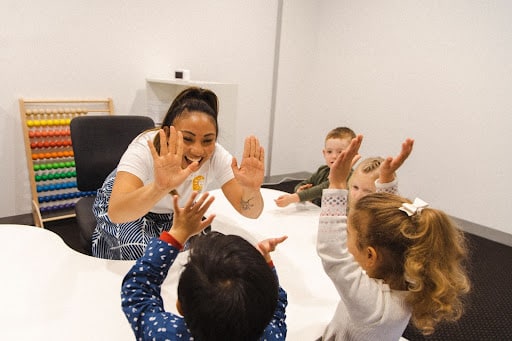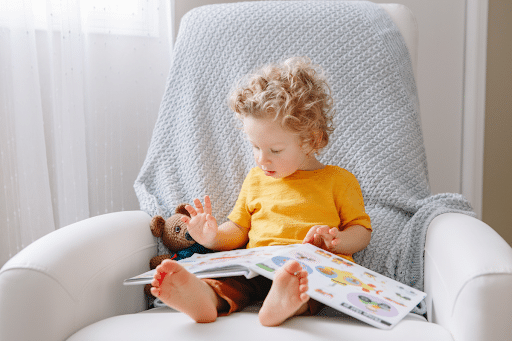
EQ Tests for Kids
EQ tests for kids are becoming increasingly popular as parents seek to understand their little ones better. In this article, we’ll dive into some of the most well-known EQ tests, weigh their pros and cons, and discuss why you might have your child tested.
Table of Contents
What is EQ, and Why is it Important?
Emotional Quotient or EQ refers to emotional and social skills that influence how we perceive and express ourselves, develop and maintain relationships, and cope with challenges.
EQ is crucial in building resilience, empathy, and effective communication skills.
Examples of Demonstrating High EQ:
- Self-Awareness: Recognising one’s emotions and understanding their impact on thoughts and actions. For instance, a child identifies that they are frustrated and chooses to take deep breaths before reacting.
- Self-Regulation: Managing emotions and impulses, such as a child who feels angry but chooses to walk away from a situation rather than having a meltdown.
- Motivation: Pursuing goals with energy and persistence, like a child who is determined to master riding a bike, even after several falls.
- Empathy: Understanding and sharing the feelings of others. For example, a child offering to share their snack with a friend who forgot theirs.
- Social Skills: Effectively managing relationships and building networks. A child who resolves a playground dispute by suggesting a “turn-taking” system shows good social skills
What are EQ Tests for Kids?
EQ tests for kids are standardised assessments designed to explore different emotional and social domains, such as emotional awareness, empathy, interpersonal effectiveness, and mood management.
While IQ tests primarily measure cognitive abilities like verbal and spatial reasoning, EQ testing for kids provides insights into your child’s emotional intelligence and social skills.
Types of Activities in EQ Testing for Kids
- Picture-Based scenarios: The child is shown a series of pictures depicting various social situations and is asked to identify the characters’ emotions.
- Role-playing: The child is given a social scenario to act out, giving assessors an idea of how well the child can empathise and communicate.
- Emotion matching: The child matches a list of scenarios or facial expressions with the corresponding emotion.
- Situational judgement: The child is given real-life dilemmas and asked how they would respond or how they think another person would feel in that situation.
- Multiple-choice questions: Questions assess a child’s ability to handle stress, form relationships, and manage their emotions.
For parents and educators, EQ testing for kids can offer actionable insights that can guide decisions regarding the type of emotional and social support your child might benefit from.

Popular and Online EQ Tests for Kids
If you’re Googling “online EQ test for kids,” you might get a mix of options. Knowing the difference between research-backed tests and quick online quizzes is crucial.
While some well-established tests can be administered online, they aren’t the DIY kind. They often need to be conducted by certified professionals, which also adds a layer of credibility but might come with a cost.
Research-Backed Tests
MSCEIT (Mayer-Salovey-Caruso Emotional Intelligence Test)
Pros: Offers a thorough understanding of a child’s emotional intelligence across multiple areas, making it one of the most comprehensive options. Also highly regarded in academic research.
Cons: May overlook cultural aspects, which could affect the test’s accuracy for children from diverse backgrounds. Can be time-consuming, potentially leading to fatigue and less reliable results.
SEI (Six Seconds Emotional Intelligence Assessment) for Youth
Pros: User-friendly interface that’s easy to navigate, making it more engaging for kids. Focuses on actionable advice, allowing immediate application in daily life.
Cons: Doesn’t cover all aspects of emotional intelligence comprehensively, possibly omitting key areas of emotional development. May require additional tests for a fuller picture.
BarOn Emotional Quotient-Inventory: Youth Version (BARON-EQ-I-YV)
Pros: Specifically designed to be age-appropriate, ensuring a more accurate read on a child’s emotional intelligence. Supported by solid research, adding credibility to the results.
Cons: Requires a trained professional for administration, which can be a hurdle in terms of both availability and cost. Can be pricey, making it less accessible for some families.
EQ Tests for Kids Free
Some free online EQ tests for kids can serve as a basic intro if you’re just starting to explore your child’s emotional skills. But be cautious—while they can offer a quick snapshot, they often lack the depth and reliability of the research-backed options.
Additionally, you may need to pay for more detailed results.
Why You Might Assess Your Child’s EQ
- Spot areas where your child needs extra emotional support
- Get insights that can lead to a more harmonious home life
- Boost your child’s grades and classroom behaviour
- See how well your kid is getting along with others
- Make big life changes, like starting school, a bit easier
- Help your child get a handle on their own feelings
- Fine-tune your parenting style to align with your child’s emotional needs
Before looking into EQ tests, it helps to know the emotional milestones children typically hit.
Up to age 2, children communicate through cues like crying and cooing and start forming emotional bonds. Between ages 2 – 4, kids grasp simple emotions and begin showing empathy and engaging in pretend play.
From ages 4 – 7, they start understanding complex emotions and turn to words over actions to express feelings. Finally, kids aged 7 – 12 show stronger empathy, manage their emotions better, and start grasping concepts like fairness and friendship.
Knowing these milestones can help you pinpoint your child’s emotional strengths and areas for growth.
What We Believe About EQ Tests for Kids
While EQ tests offer insightful data, they are not the be-all and end-all measure of a child’s emotional intelligence.
While they can be a starting point for understanding your child’s unique emotional framework, these tests are most useful when part of a broader evaluation that considers the child’s entire wellbeing, academic performance, and other skills and abilities.
At Shichida Australia, we take a multi-faceted approach to nurture emotional intelligence alongside cognitive skills.

Here’s how our classes contribute to EQ development:
Sensory Learning: We engage kids using visual, auditory, and kinesthetic stimuli. This holistic approach not only suits varied learning styles but also helps in building empathy.
Positive Reinforcement: Our classes are all about praising the effort, not just the outcome. This boosts self-esteem and fosters a growth mindset, key for EQ development.
Mindfulness: We incorporate mindfulness techniques to help children focus and regulate their emotions. This creates a sense of calm and helps in emotional management.
Play-Based Learning: Play isn’t just fun; it’s a learning tool. Through play, children learn to communicate, collaborate, and understand others, honing vital social skills.
Parental Involvement: We equip parents with tools and strategies to continue the emotional learning journey at home, helping you understand your child’s unique emotional needs better.
This comprehensive approach ensures that your child is developing both academically and emotionally, making them well-rounded individuals for the future.
Understanding your child’s EQ is as vital as understanding other aspects of their development for a well-rounded upbringing.
At Shichida, we incorporate EQ and IQ raising teaching methods as part of our classes and encourage parents to explore both dimensions as part of their child’s overall education and upbringing.
While an online EQ test for kids can provide valuable insights, they should be considered alongside other assessment forms and real-world observations for a complete picture of your child’s emotional well-being.
Learn more about what we teach or book a trial class at one of our early learning centre’s today.


